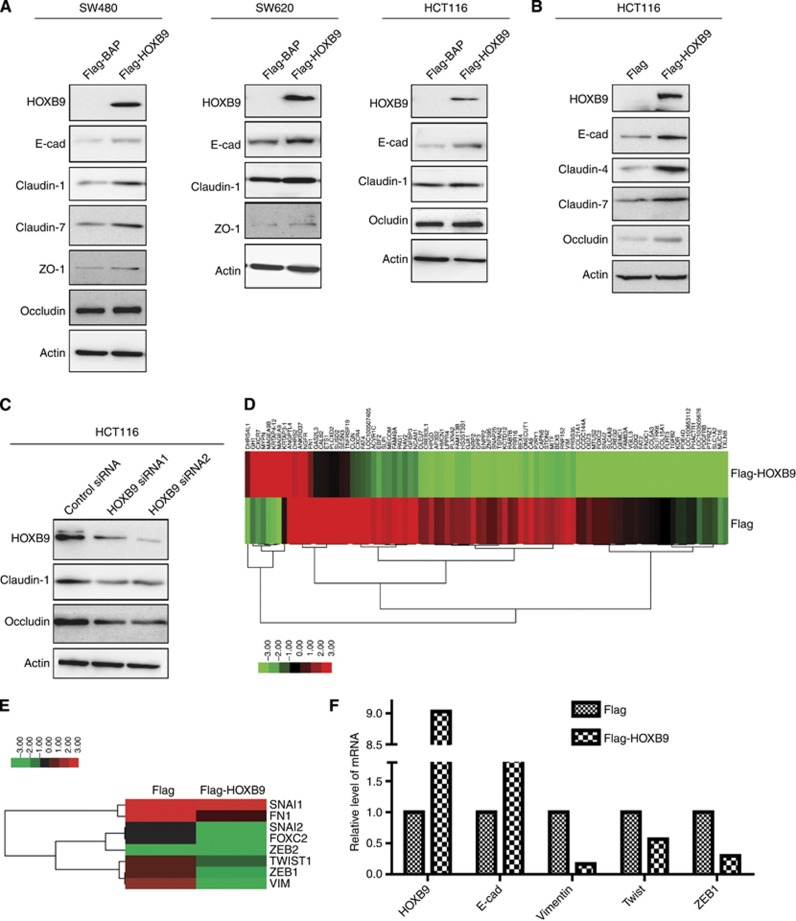Figure 5.
HOXB9 promotes colon adenocarcinoma cell differentiation by upregulating cellular junction protein expressions. (A) In the gain-of-function experiment, transient expression of HOXB9 upregulated adherens junction protein E-cadherin and tight junction proteins claudin-1, claudin-7, occludin and ZO-1 in SW480 cells (left); E-cadherin, claudin-1 and ZO-1 in SW620 cells (middle) and E-cadherin, claudin-1, claudin-7 and occludin in HCT116 cells (right). (B) In HCT116 cells, stable expression of HOXB9 upregulated E-cadherin, claudin-4, claudin-7 and occludin. (C) In the loss-of-function experiment, stably knocking down of HOXB9 in HCT116 cells led to downregulation of claudin-1 and occludin. (D) HOXB9-regulated genes with 16-fold changes were presented in a heatmap for displaying gene expression profile. (E) Important EMT-related genes SNAI1, SNAI2, FOXC2, ZEB1 ZEB2, Twist, FN1 and VIM were selected to plot in a heatmap presentation, plotted showing that EMT-related transcriptional factors are drastically downregulated, so do mesenchymal markers FN1 and VIM. (F) Confirmation of changes in gene expression for selective key genes in Flag HCT116 or Flag-HOXB9 HCT116 cells. Epithelial marker E-cadherin, mesenchymal marker Vimentin and EMT-stimulating transcriptional factors Twist and ZEB1 were measured by quantitative PCR in the cells expressing HOXB9. Data were expressed as relative expression of mRNAs.

